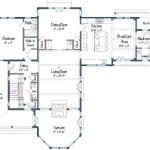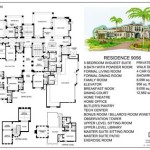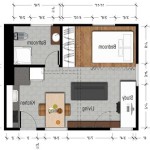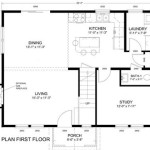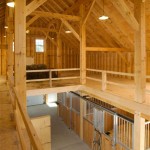100 Unit Apartment Building Plans: A Comprehensive Guide
Designing and constructing a 100-unit apartment building is a complex undertaking that requires careful planning and execution. From concept to completion, there are numerous factors to consider to ensure the project is successful and meets the needs of future tenants. In this article, we delve into the essential aspects of 100 unit apartment building plans, providing a comprehensive overview for designers and developers alike.
Floor Plan Design
The floor plan is the foundation of any apartment building, dictating the spatial arrangement and functionality of the units. When designing a 100-unit building, several key considerations must be addressed:
- Unit Mix: Determine the number and types of units, considering factors such as market demand, target demographics, and rent potential.
- Unit Layout: Plan efficient and inviting unit layouts that maximize space utilization, natural light, and privacy.
- Common Areas: Design communal spaces such as lobbies, courtyards, and lounge areas to foster a sense of community and enhance the overall living experience.
Building Configuration
The building configuration impacts the aesthetics, functionality, and cost of the project. Common configurations include:
- High-Rise: Tall, vertical buildings with multiple floors, offering panoramic views and a compact footprint.
- Mid-Rise: Buildings with a moderate number of floors, typically ranging from 5 to 12, providing a balance between height and density.
- Low-Rise: Buildings with a limited number of floors, usually 3 to 4, characterized by lower construction costs and a more intimate scale.
Structural System
The structural system provides the framework and support for the building. For a 100-unit apartment building, common structural systems include:
- Concrete: Durable, fire-resistant, and versatile, concrete is a popular choice for high-rise and mid-rise buildings.
- Steel: Lightweight, strong, and earthquake-resistant, steel is suitable for a wide range of building configurations.
- Hybrid: Combining concrete and steel elements to create a cost-effective and efficient structural system.
Mechanical, Electrical, and Plumbing (MEP) Systems
MEP systems provide essential infrastructure for a functional and comfortable living environment. Key considerations include:
- HVAC: Design an efficient heating, ventilation, and air conditioning system to maintain thermal comfort and indoor air quality.
- Electrical: Ensure adequate electrical supply, wiring, and lighting to meet the needs of tenants.
- Plumbing: Plan a comprehensive plumbing system that includes water supply, drainage, and sanitary provisions.
Sustainability and Energy Efficiency
In today's environmentally conscious market, incorporating sustainable and energy-efficient features is crucial:
- Energy-Efficient Appliances: Specify appliances and equipment that meet high energy efficiency standards.
- Renewable Energy: Consider installing solar panels or other renewable energy sources to reduce operating costs.
- Green Building Certifications: Obtain green building certifications such as LEED or WELL to demonstrate the building's commitment to sustainability.
Tenant Amenities
Tenant amenities enhance the living experience and attract potential renters. Some desirable amenities include:
- Fitness Center: Offer a fully equipped fitness facility for residents to stay active and healthy.
- Swimming Pool: Provide a swimming pool for recreational activities and relaxation.
- Rooftop Terrace: Create a rooftop terrace with panoramic views and communal gathering spaces.
Project Planning and Execution
Successful execution of a 100 unit apartment building project requires meticulous planning and coordination:
- Site Selection: Choose a suitable site that meets zoning requirements, accessibility, and market potential.
- Feasibility Study: Conduct a thorough feasibility study to assess market demand, financial viability, and environmental impact.
- Design Development: Develop detailed building plans, specifications, and construction documents.
- Construction Management: Hire a qualified construction manager to oversee the construction process and ensure quality control.
Conclusion
Designing and constructing a 100 unit apartment building is a multifaceted undertaking that demands expertise, creativity, and meticulous planning. By carefully considering the factors outlined in this article, architects and developers can create functional, sustainable, and appealing living spaces that meet the needs of modern tenants. From the initial concept to the final execution, a comprehensive approach ensures a successful project that enhances the urban landscape and provides comfortable and enjoyable homes for its residents.

100 Unit Apartment Complex Planned In Guilford Under State S Affordable Housing Statute Ct Examiner

Six Story 100 Unit Apartment Complex Proposed Olympic And Mariposa Urbanize La

Eight Story 100 Unit Apartment Complex Breaks Grounda At Olympic Mariposa Urbanize La

Here S A First Glimpse Of The Actual Design For 100 Unit Condo Tower Randall Davis Wants To Put At End Greenstreet Downtown Swamplot

100 X 55 Apartment Floor Plan 5500 Square Feet Autocad

Vancouver Development Al Project Granville Island Ctv News

Plans Coming Together For 301 Apartments Complex In Delray Beach

St Cloud City Council Votes Down Proposed Pinecone Road Apartments

100 Unit Mixed Use Building Planned In Roxborough Rising Real Estate

Six Story 100 Unit Apartment Building Rises Sunset Fountain Urbanize La

